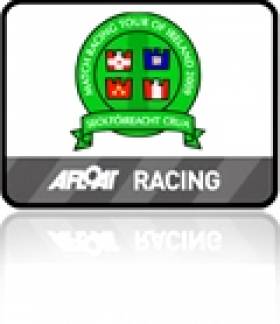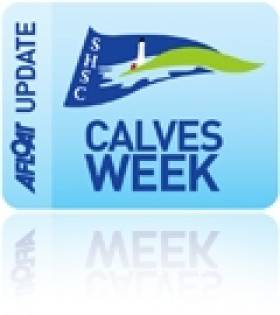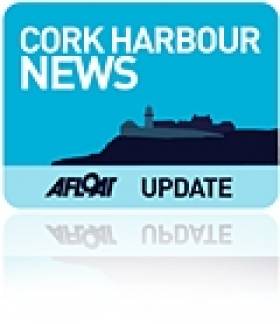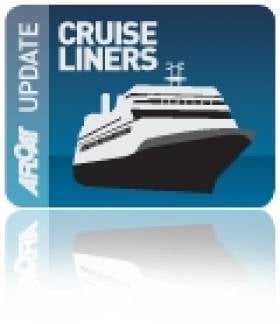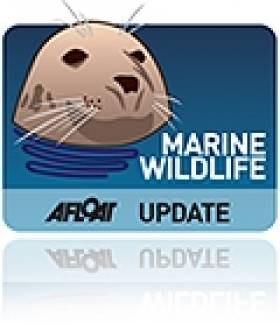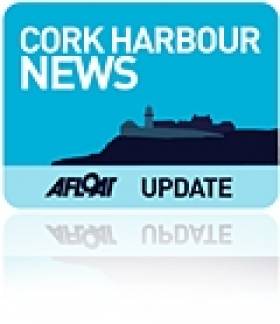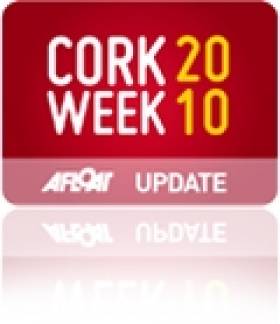Displaying items by tag: Cork Harbour
Cork Match Racing Open Cancelled Due to Lack of Race Officers
Match Racing Ireland (MRI) has cancelled the Cork Match Racing Open due to be held in ten days time.
The Royal Cork Yacht Club (RCYC) was running the Open, an event that forms the final leg of the Irish Match Racing Tour before the National Championship to be held in Kinsale at the end of October.
However in a statement issued this morning MRI says that "due to the unavailability of a suitable race management team Royal Cork YC and Match Racing Ireland have regrettably come to a decision to cancel the Open".
The MRI statement goes on to say:
"This is obviously very disappointing for every one concerned but we felt that invitations should not be sent out, committing teams to accommodation and transport arrangements, unless we were confident that we would be able to arrange an event of the quality we all expect.
We apologise to the teams who where looking forward to attending.
Looking at the reasons for the cancellation the main issues seem to be a question of scheduling. Post Cork Week burn out, other championship commitments and plain simple family holidays have spoken for a number of the race management teams that would normally be supportive of match racing. On the other hand the extra resources we need and challenges of running 30-40 races a day mean that it unfair to throw
some one in at the deep end at short notice"
There were also issues with the Dublin Match Racing Open in May because of the availability of crews and MRI says it won't schedule events around this time again because of exam timetables.
The statement continues: "Any sailing series in Ireland with out the involvement of Cork, well it's just not the real deal. There are plenty of Cork sailors involved with match racing, our main pool of Irish umpires are based in the county and RCYC and Kinsale have been at the forefront in terms of pushing match racing forward in this country."
It is understood Royal Cork has requested that MRI set-up an open meeting later in the year to get every one in the county with an interest in match racing together and look at how to take it forward.
Entries Gear up for 'HM Yachts' League in Crosshaven
Competitors in Cork Harbour are gearing up for Thursday's first race of The HM Yachts August/September League which takes place at the Royal Cork Yacht Club (RCYC), Crosshaven. The regatta series will be sailed under handicap for Cruisers. Dates as follows:
HM Yachts Series
Race 1 Thursday August 5th 2010 1850
Race 2 Thursday August 12th 2010 1850
Race 3 Thursday August 19th 2010 1850
Race 4 Thursday August 26th 2010 1850
Race 5 Thursday September 2nd 2010 1825
Race 6 Thursday September 9th 2010 1825
Race 7 Friday September 17th 2010 1825
A Notice of Race is attached for download below
Raymarine Electronics Sale in Cork Harbour
The firm who are also Nanni diesel and Yanmar engine agents are based in Unit 11, Kilnagleary Business Park,Carrigaline, Co. Cork. Web site (under construction) www.completemarinesolutions.ie or call +353 (0)21 4376766
Spinnaker Run to Calves Week
The race continued to Schull where Donal O'Learys 'D Tox' took line honours finishing shortly after 7am. With numerous requests for redress, the race committee had a busy time sorting Class One results, which resulted in 'D Tox' taking first in both IRC and Echo, with Exhale and Saxon Senator filling second and third.
The spoils were shared in Class Two With Kieran O Briens 'Magnet' taking the IRC trophy, with the Barrett/Conlon team in 'Y Knot' winning Echo.
In the combined Classes Three and Four dogged determination finally paid off for Eddie Higgins and the crew of La Maraquita who, sailing the smallest boat in the race, crossed the Schull line in an elapsed time of sixteen and a half hours to capture the Echo trophy, with David Kenefick's 'Tiger' winning IRC.

West Cork bound. Photo: Robert Bateman
Compared with their companions from the previous night, the five White Sail boats that started from Kinsale on Saturday morning had an uneventful long slog to Schull where Bryan Heffernans 'Aisling' took first ahead of Doherty and Co in 'Free Spirit' and Julian Dockery's 'Flying Fish',while Kieran Dwyer's 'Brazen Huzzie' was the sole finisher in White Sail Two.
On Sunday the Wind Gods totally deserted Schull, where Race Officer Neill Prendeville was finally forced to fly the abandonment flag after a four hour postponement.
Cork Harbour Open Day 2010 - Call for events
Cork Harbour
Open Day will take place on Saturday 4th September 2010. Aimed at embracing what Cork Harbour has to offer, the Cork Harbour Open Day seeks to raise awareness of the different activities available for people in the harbour both on and off the water.
Cork Harbour is the second largest natural harbour in the world, next to Sydney Harbour, offering beautiful locations for enjoying the outdoors, dramatic coastlines, and excellent leisure facilities. It is home to some very talented artists, sportsmen and women, and people who are passionate about the history, heritage and cultural value of Cork Harbour.
To get involved in Cork Harbour Open Day or to organise an event on the day, please visit www.corkharbour.ie or contact Sara Dymond at [email protected] or 021-4625375.
The idea for a Harbour Open Day emerged from discussions between various stakeholders involved in the development and implementation of the Integrated Strategy for the Harbour. A group comprising representatives from UCC, City and County Councils and the Port of Cork set about working together to engage users of the Harbour and to organise the Open Day.
Info: www.corkharbour.ie
Dublin and Cork Share Cruise-Calls Bonanza
The ports of Dublin and Cork are scheduled to receive a record 139 cruiseships in total this year, bringing 180,000 visitors and crew. Many more of these cruiseships are due to visit over the next two months and stretching into late Autumn. Between €35-55m is expected to be generated into the Dublin region from high-spend cruise visitors
while a further €5m is predicted for the local economy at Cork, writes Jehan Ashmore.
A notable visitor due to grace Dublin Bay is the return of The World, albeit not strictly a cruiseship but the first custom-built time-share ship. The vessel is to dock in the capital for four-nights from 4-8 August and then sails overnight to Cobh, for two-nights from 9-11 August.
In essence, The World presents an exclusively unique lifestyle experience. Instead of passengers, there are 'residents' who live onboard. Residents of the 43,188 gross tonnes (GT) vessel don't merely occupy a cabin but own large-sized luxurously appointed private apartments that are 'home' complete with balconies.
On 9 August, Silver Cloud docks at Dublin from Oban, Scotland. Measuring 16,927 GT, the vessel may not be the largest with only 315 passengers, but is an ultra-luxury cruiseship, regarded as one of the highest standards in the cruise-sector industry.
Returning to Cork Harbour, Cobh awaits the mighty Independence of the Seas. At 154,407 tonnes, she is the biggest ever cruiseship to dock at any Irish port. With a massive 4,375 passenger capacity, attractions include rock-climbing or surfing-boarding using a special pool. The 'Independence' berths mid-afternoon on 29 August for an overnight call, departing 18.00hrs the next day.
Among smaller cruiseships, the private-motoryacht like, Island Sky of 4,000 tonnes and with 200 passengers, calls to Dublin on 11 August, and may berth upriver close to the new Samual Beckett Bridge.
Those keen on traditional ships, can look forward to the visit of Classic International Cruises Princess Danae, built in 1955. The veteran is due 16 August, and her sister, Princess Daphne is expected 2 September. Unusually the 16,000 tonnes pair were converted from general cargo-ships for a career in cruising.
New cruiseship, Costa Luminosa (92,700 GT) costing US $ 548m makes a second call to Cobh on 3 September and is operated by Costa Cruises.
This is the first time the Italian company has ventured into Irish cruising waters.
Without doubt the largest Dublin caller this season will be Emerald Princess. The giant weighs some 113,000 gross tonnes and at 288m long will certainly provide a spectacle, with lights blaring over a dozen or so decks, during a dusk departure on 14 September.
Also entering service this year, P&O Cruises 116,000 tonnes new Azura, is set to visit Dublin on 23 September and Cork the next day. The Italian built newbuild cost US $ 535m and has a capacity for 3,076 passengers.
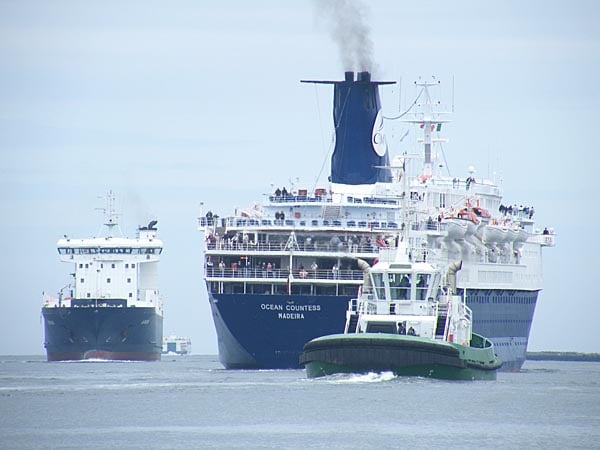
Ocean Countess departing Dublin. Photo: Jehan Ashmore/ShipSNAPS
A newcomer to Irish ports is Cruise & Maritime Voyages Ocean Countess which is making round Ireland itineraries with calls at Cobh on 13 August and 12 September. Incidently the 'Countess' was converted into a troopship for the Falkland Islands conflict in 1982.
Jewel of the Seas (90,090 GT) makes a Cobh call on 7 September and exactly a month later returns, marking the last cruise-call to Cork in 2010 while Fred Olsen's Boudicca will be Dublin's last caller on 20 November.
For further information on other visiting cruiseships, please click links:
Cork Harbour Dolphins Jumping
Pictures of Dolphins jumping off Roches Point in Cork harbour have been captured for youtube viewers courtesy of a Cork fishing trip this week. The three harbour dolphins jump clean out of the water in the clip below from about 2:20 on the timeline. A Lovely marine animal sight on a summers evening!
Excalibur Delivers RIBS Round the Coast
Excalibur RIBs of Cork have been busy this summer not only with a new 65 knot RIB for Round Ireland record holder Philip Fitzgibbon but also with new boats for Civil Defence teams in two locations around the coast. Joe McCollum of Excalibur will deliver a 7m RIB to Mayo Civil Defence on the West coast this week. A 6.5 metre boat for Cork Civil Defence is also due this month. The Cork harbour yard is also completing a 9m full cabin P5 boat for a West Cork commercial application later in the summer. More news from Excalibur at www.ribs.ie or mobile 087 2198651.
The Chairman of the Port of Cork, Mr Dermot O'Mahoney commented on the company's annual results for 2009 stating that the Port of Cork had delivered a resilient performance given the national economic recession. Total traffic at the Port of Cork amounted to 8.3 million tonnes, a decrease of 17.8% on the 10. 1 million tonnes achieved during 2008. This reduction was caused directly by the economic slowdown in the Irish economy since the second half of 2008. Turnover amounted to €20.8 million, a decrease of 20.8%, however an operating profit of €1.5 million after deducting costs including exceptional costs of docker and Lift on – Lift off (LOLO) stevedoring rationalisation of €6.3 million, resulted in a loss on ordinary activities after taxation, of €4.9 million.
Oil traffic which accounts for 60.93% of cargo handled through the Port of Cork decreased by 16.8% to 4.84 million tonnes. The Port of Cork remains the second busiest Port in Ireland in terms of the number of containers handled, however container traffic reduced by 20% to 148,621 TEU's. In 2009 containers shipped through the Port of Cork were destined to and from the mainland European ports of Rotterdam, Antwerp and Zeebrugee. Additionally, there is a weekly service linking Ringaskiddy in Cork with Scandinavia, North West Europe and the Mediterranean. Non-oil traffic accounted for 3.48 million tonnes in 2009, a decrease of 789,434 tonnes or 18.47% when compared with the same period in 2008.
Trade figures for the first half of 2010 suggest that there may be a stabalisation in trade as activity levels are generally in line with those of the same period of 2009. Increases in certain trades such as bulks and trade cars and the fact that other trades are starting to consolidate is encouraging.
Mr. O'Mahoney said: "Sustaining the Port business in the current economic climate has required a continued focus on innovation and change in the business practices. Similar to our customers, the Port of Cork has taken an aggressive position on controlling costs."
Despite challenges of the current economic environment the Port of Cork are continually seeking out new business and trading opportunities and are confident all efforts in this area will be successful in time.
Chief Executive, Mr. Brendan Keating pointed out that The Company's sustained commitment to investment in the Port is a clear demonstration of confidence in the potential for business development and trade growth along with supporting our commitment in providing first class port facilities to customers.
The achievement of higher levels of efficiencies across all Port activities continues to be a priority in maintaining the competitiveness and attractiveness of the Port to customers. A key milestone in this regard was the completion of the Dock Rationalisation Programme in February 2009. This agreement saw the elimination of the casual dock labour system in the Port. In addition to improving the competitive position, it will also help improve levels of flexibility and responsiveness to customers thereby making a significant contribution to supporting the drive for business growth.
Mr. Keating said: "The Docker Rationalisation programme presented the Port of Cork Company with the opportunity to enter into an agreement with the Stevedores, which resulted in the Company taking control of all aspects of Lift on Lift off trade in the Port. This additional milestone agreement, completed in July 2009, has made a dramatic improvement to efficiency and has contributed to long-term competiveness thereby helping secure the future of the Port."
During 2009 the Port of Cork Company undertook a comprehensive review of the planning refusal by An Bord Pleanála for a new container terminal at the Oyster Bank, Ringaskiddy. Arising from this review it was decided to prepare a new Port Strategic Plan a key element of which involved a comprehensive evaluation of suitable sites in Cork Harbour for a new container terminal. Following detailed technical assessments and consideration of all issues raised during the stakeholder engagement, the primary location in the lower harbour for the relocation of port activities from the upper harbour is Ringaskiddy.
Speaking about the outcome of the Strategic Development Plan Review, Mr. Keating said: "Ringaskiddy is already the location of extensive investment in Port facilities where considerablevolumes of port trade are handled. The development of additional Port facilities at this location would mean that demands associated with the world wide trend towards larger vessels could be met in the Port and also the development would be consistent with the objectives of Cork County Development Plan."
However he added it was critical that the upgrade of the N28 should be advanced as a priority action to support the Port and the other vitally important industries located in the Ringaskiddy area.
He continued: "The Port of Cork is confident that new port facilities can be delivered in support of the business and trading needs of the region. It is a strong belief of the Port of Cork Company that the provision of Port infrastructure capacity is essential in enhancing the economic prospects for Cork City, County and the South West Region."
In 2009, the company hosted 54 cruise ships carrying in excess of 103,000 passengers and crew which contributed in excess of €44 million to the economy of the region. The investments made by the Port of Cork Company in the development of cruise facilities in Cobh is now showing positive returns with booking levels continuing to grow. The Port of Cork Company is committed to the further development of this business by the investment of additional capital in the next three to five years.
Towards the end of 2009, the Port of Cork implemented a Leisure and Recreation Strategy for Cork Harbour. The primary focus of the strategy is on water based Leisure and Recreation activities in and around Cork Harbour in which the Port of Cork aims to play a leading role in providing and supporting improvements of amenities in these areas. Consultation with community groups, water related clubs, statutory bodies and other interested parties will be an important feature of continuing this strategy in the future. The new Port of Cork City Marina is the first marina facility in the heart of Cork City and a key advance of the Leisure and Recreation Strategy.


























